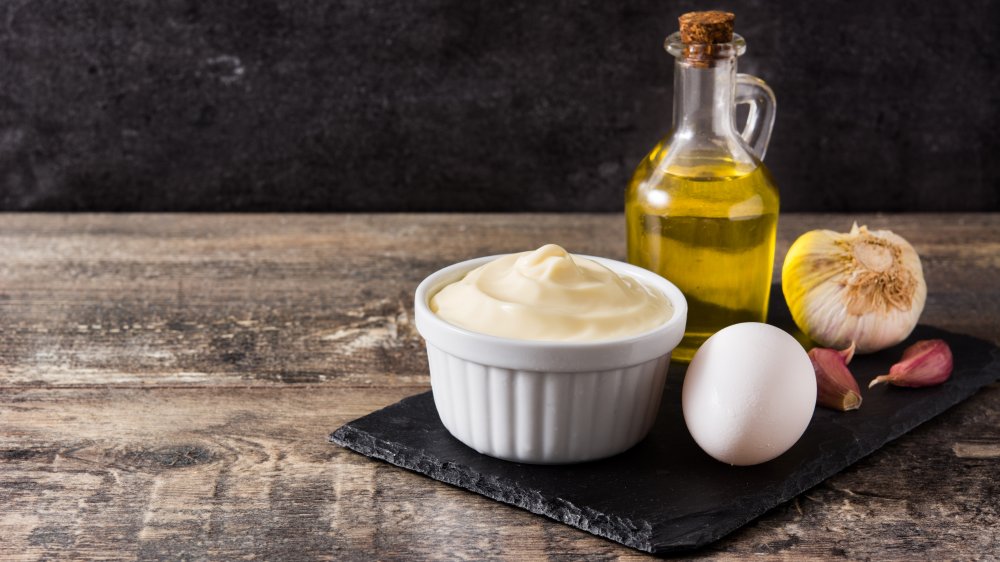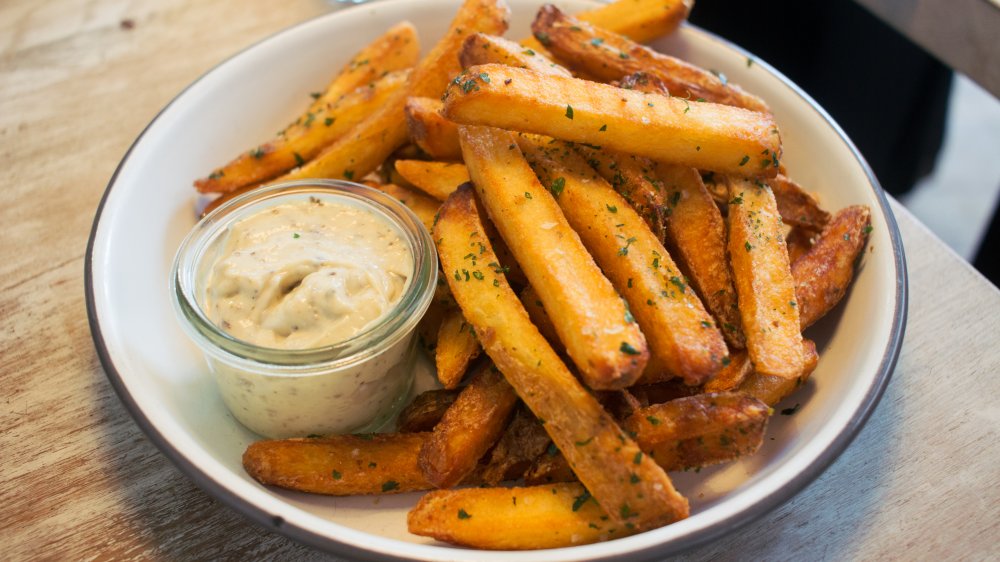Facts You Probably Don't Know About Aioli
Yes, it's often confused with mayonnaise, but doesn't aioli somehow exude a more upscale allure? And, though it has exploded on restaurant menus nationwide in recent years, aioli is no culinary newcomer — it has been satisfying palates for centuries.
As Clifford A. Wright explained in his 1999 book A Mediterranean Feast, possibly the first mention of the creamy condiment dates back over 2,000 years, to Pliny the Elder, who lived in the first century A.D. While stationed in the Catalan region of Spain, he wrote that garlic "beaten up in oil and vinegar ... swells up in foam to a surprising size" (via Food Timeline).
Of course, this mention refers to the Spanish version of aioli, called allioli, a word that combines the Catalan terms for garlic and oil (via Portland Press Herald). That version, true to name, traditionally involved only those two ingredients. But, according to Food Republic, in the Provence region of France, aioli makers would mash garlic cloves into a paste with a mortar and pestle, then whisk in ingredients like egg yolk, lemon juice, mustard, and oil to create the frothy emulsion that we more readily recognize today.
However, even though mayo features some overlapping ingredients (oil, lemon juice, and egg yolk), The Spruce Eats notes that aioli remains distinctive, thanks to its infusion of both garlic and extra-virgin olive oil (as opposed to the neutral-flavored oil, like canola, often used in mayonnaise).
The many forms and uses of aioli
Any traditional recipe will inspire a slew of spin-offs, and aioli is no exception. According to Bon Appétit, aioli can be basically another word for mayonnaise, may feature olive oil or garlic, or be either traditional or cutting-edge, spiked with flavor additions like chili, ginger, or roasted shallots.
Though The New York Times describes aioli as "the quintessential Provençal condiment," ideal for pairing with veggies, the sauce has been traditionally served alongside a wide variety of dishes. In Mastering the Art of French Cooking, serving suggestions ranged from snails and boiled fish (especially cod), to potatoes, green beans, and hard-boiled eggs (via Food Timeline).
According to Restaurant Business, the condiment remains so beloved in France that it's celebrated at the close of summer in Provence via the "potluck supper" called Le Grand Aïoli or Aïoli Monstre. Essentially, attendees haul whatever fresh foods they have on hand to dip into massive bowls filled with the garlicky goodness.
In the United States, the Portland Press Herald notes that aioli can grace plates alongside everything from french fries and fish tostadas, to burgers and pulled pork sandwiches. By 2018, it had even arrived on McDonald's menus in Australia, while Burger King tested an avocado version back in 2013 for its Avocado Swiss Whopper.
Clearly, aioli is at home anywhere, from farm-to-table to fast food to fine dining. With versatility like that, it just might stick around for the next couple thousand years.

